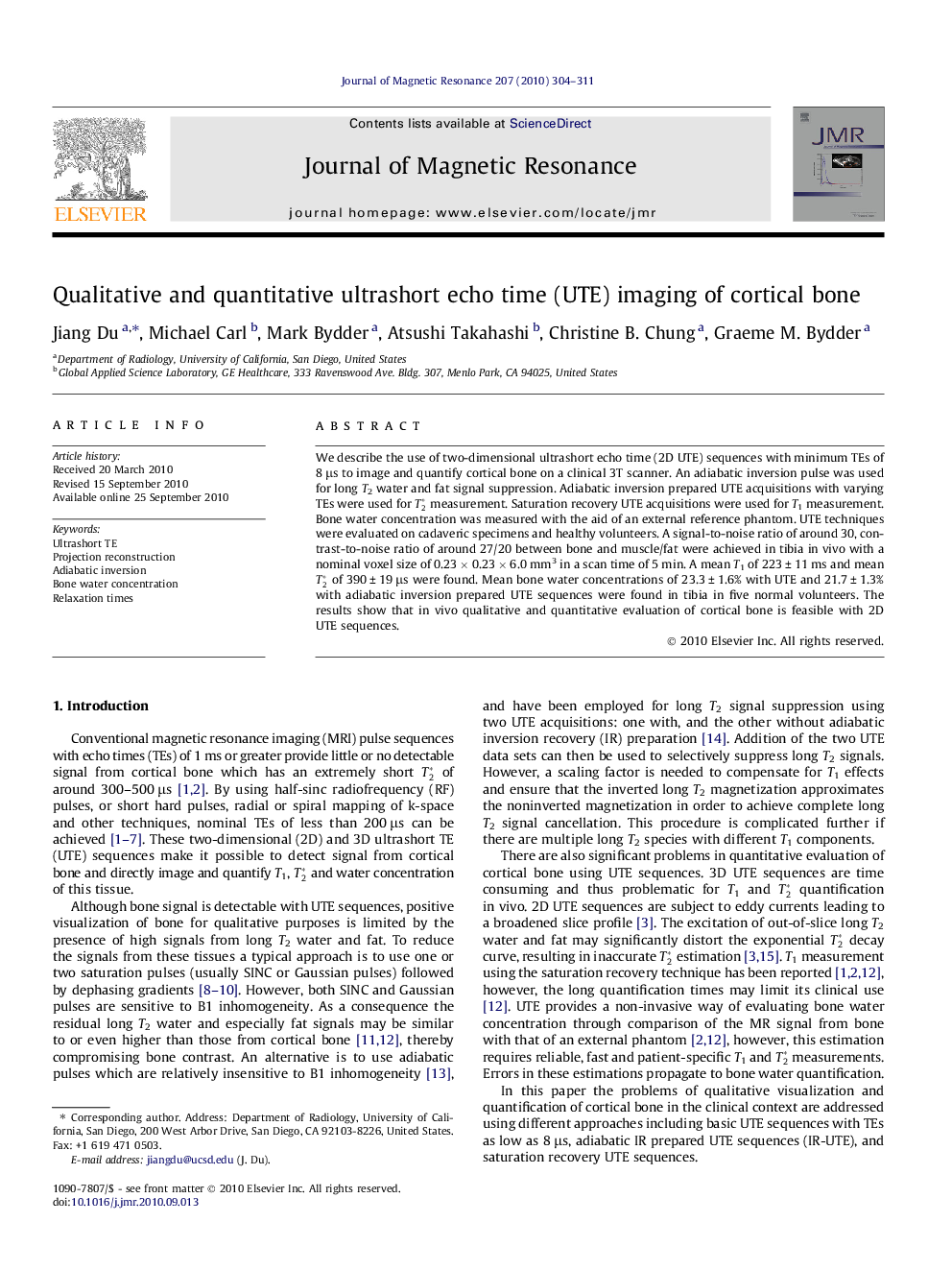| Article ID | Journal | Published Year | Pages | File Type |
|---|---|---|---|---|
| 5406460 | Journal of Magnetic Resonance | 2010 | 8 Pages |
Abstract
We describe the use of two-dimensional ultrashort echo time (2D UTE) sequences with minimum TEs of 8 μs to image and quantify cortical bone on a clinical 3T scanner. An adiabatic inversion pulse was used for long T2 water and fat signal suppression. Adiabatic inversion prepared UTE acquisitions with varying TEs were used for T2â measurement. Saturation recovery UTE acquisitions were used for T1 measurement. Bone water concentration was measured with the aid of an external reference phantom. UTE techniques were evaluated on cadaveric specimens and healthy volunteers. A signal-to-noise ratio of around 30, contrast-to-noise ratio of around 27/20 between bone and muscle/fat were achieved in tibia in vivo with a nominal voxel size of 0.23 Ã 0.23 Ã 6.0 mm3 in a scan time of 5 min. A mean T1 of 223 ± 11 ms and mean T2â of 390 ± 19 μs were found. Mean bone water concentrations of 23.3 ± 1.6% with UTE and 21.7 ± 1.3% with adiabatic inversion prepared UTE sequences were found in tibia in five normal volunteers. The results show that in vivo qualitative and quantitative evaluation of cortical bone is feasible with 2D UTE sequences.
Related Topics
Physical Sciences and Engineering
Chemistry
Physical and Theoretical Chemistry
Authors
Jiang Du, Michael Carl, Mark Bydder, Atsushi Takahashi, Christine B. Chung, Graeme M. Bydder,
